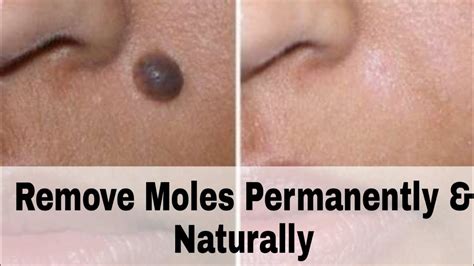Moles, also known as melanocytic nevi, are common skin growths that can appear anywhere on the body. While most moles are harmless, some people may want to remove them for cosmetic reasons or because they are concerned about the possibility of skin cancer. Removing moles can be done through various methods, ranging from surgical excision to non-invasive procedures. It’s essential to consult a dermatologist or healthcare professional before attempting to remove a mole, as they can assess the mole and recommend the best course of action.
Understanding Moles
Before diving into removal methods, it’s crucial to understand what moles are and how they form. Moles are clusters of pigmented cells called melanocytes. They can be flat or raised, and their color can range from pink to brown to black. Most moles appear during childhood and adolescence, but new moles can form in adulthood as well.
Reasons for Removal
People may want to remove moles for several reasons:
- Cosmetic Concerns: Moles can be unsightly, especially if they are prominent or located in visible areas.
- Skin Cancer Concerns: While most moles are benign, there is a small chance that a mole could be cancerous. If a mole changes in size, shape, color, or texture, it’s essential to have it evaluated by a dermatologist.
- Irritation or Discomfort: Moles can sometimes cause irritation or discomfort, especially if they are located in areas where they can be rubbed or irritated by clothing.
Methods of Mole Removal
There are several methods for removing moles, each with its own advantages and disadvantages.
1. Surgical Excision
This is a common method for removing moles. The procedure involves:
- Local Anesthesia: The area around the mole is numbed with a local anesthetic to minimize discomfort.
- Excision: The mole is cut out, and the surrounding skin is stitched together.
- Biopsy: The removed mole is often sent to a lab to check for cancer cells.
2. Shave Removal
For moles that are raised above the skin, a dermatologist might use a special tool to shave the mole off. This method is less invasive than surgical excision but might not remove the mole completely, as some cells can remain beneath the skin’s surface.
3. Laser Removal
Laser removal can be effective for moles that are not too deep. This method uses a laser to break up the pigment in the mole, allowing the body to absorb it. However, it may require multiple sessions and is not suitable for all types of moles.
4. Cryotherapy
Cryotherapy involves freezing the mole with liquid nitrogen, causing it to eventually fall off. This method can be less effective for deeper moles and might require multiple treatments.
Post-Removal Care
After a mole is removed, it’s essential to follow the aftercare instructions provided by the healthcare professional to ensure proper healing and minimize the risk of complications. This typically includes:
- Keeping the area clean and applying antibiotic ointment to prevent infection.
- Avoiding picking at scabs or attempting to remove stitches yourself.
- Following up with the dermatologist to check on the healing progress and to have stitches removed if necessary.
Prevention and Monitoring
While removing moles can be effective for cosmetic or health reasons, preventing new moles from forming and monitoring existing ones is also crucial. Here are some tips:
- Sun Protection: UV rays from the sun can stimulate the formation of moles. Using sunscreen with a high SPF, wearing protective clothing, and avoiding prolonged exposure to the sun, especially during peak hours, can help.
- Regular Skin Checks: Regularly inspect your skin for new moles or changes in existing moles. The ABCDE rule can help identify potentially cancerous moles: Asymmetry, Border, Color, Diameter, and Evolving.
Conclusion
Removing moles can be a straightforward process when done by a professional. However, it’s crucial to understand the reasons behind the removal, the methods available, and the importance of post-removal care. Always consult with a dermatologist or healthcare professional to determine the best approach for your specific situation.
What are the most common methods for removing moles?
+The most common methods include surgical excision, shave removal, laser removal, and cryotherapy. Each method has its own set of indications and potential outcomes, and the choice of method depends on the characteristics of the mole and the preferences of the patient.
How do I know if a mole is cancerous?
+While most moles are not cancerous, changes in a mole’s size, shape, color, or texture can indicate the development of skin cancer. The ABCDE rule is a helpful guide: Asymmetry, Border irregularity, Color variation, Diameter increase, and Evolving changes over time. If you notice any of these changes, it’s crucial to have the mole evaluated by a dermatologist.
Can moles be prevented?
+While not all moles can be prevented, protecting your skin from the sun can help reduce the formation of new moles. This includes using sunscreen with a high SPF, wearing protective clothing, and limiting your exposure to the sun, especially during peak hours.
What should I expect after mole removal?
+After mole removal, it’s essential to follow the aftercare instructions provided by your healthcare professional to ensure proper healing and minimize the risk of complications. This typically includes keeping the area clean, applying antibiotic ointment, and avoiding activities that could interrupt the healing process.
Are there any risks associated with mole removal?
+Like any medical procedure, mole removal carries some risks, including infection, scarring, and in rare cases, the possibility of the mole returning. Discussing these risks with a healthcare professional and following their advice can help minimize complications.


